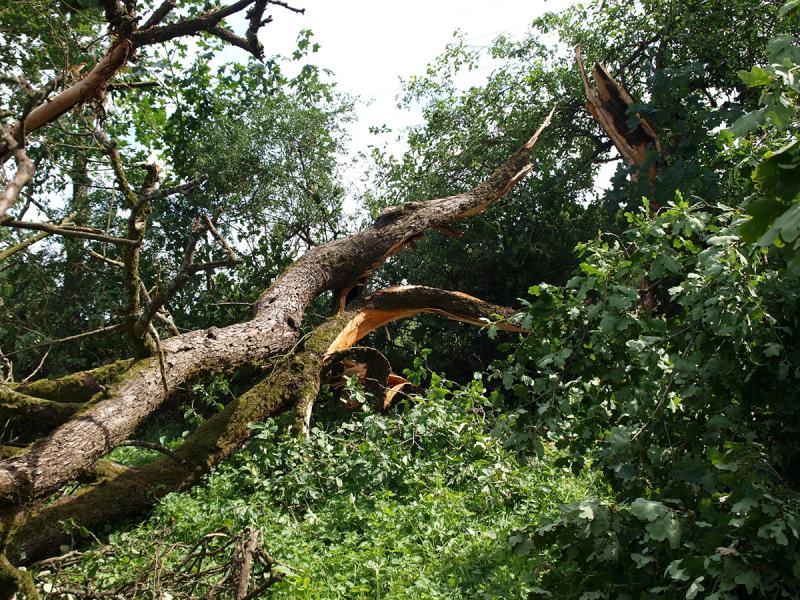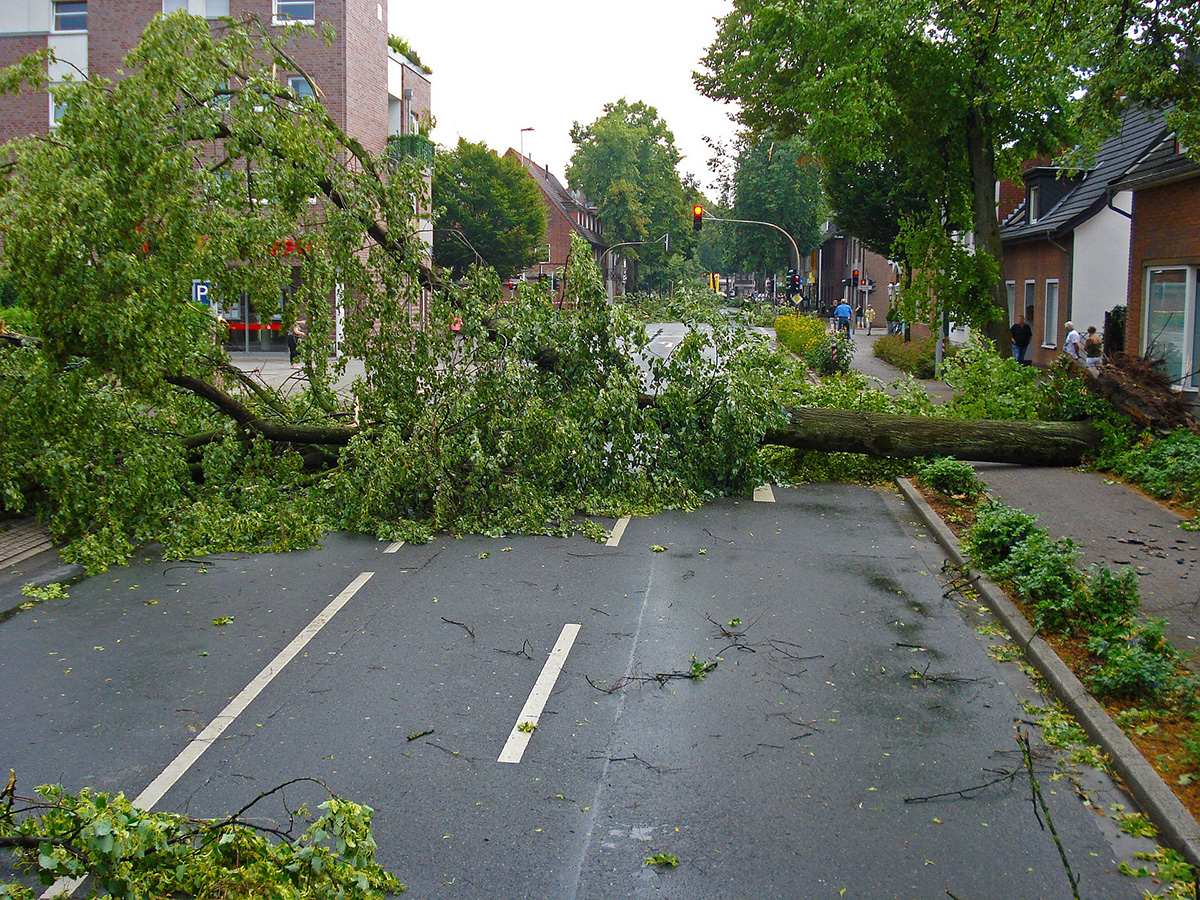
Every summer storms roll across the Great Plains, and this year has been no exception with high winds leaving damage in their wake, but many homeowners are unsure what to do about storm damage or the best techniques to minimize long-term effects in their trees.
Remove Immediate Hazards
First, eliminate any tree hazards that the storm left behind. Broken branches that are dangling in the tree or are only loosely attached should be removed as soon as possible. But before climbing into the tree, consider whether it's safe for you to attempt the work yourself, or if you should contact an arborist. Don't try to prune a large tree if it is beyond your skill. Chainsaw work off the ground is dangerous and best left to professional arborists. Locate a certified arborist by visiting the Nebraska Arborist Association's website.
Branches that are broken, but still firmly attached to the tree, are not an immediate threat and can be removed at your convenience.
The wood of branches and trunks that are split through the center will not heal or knit themselves together, and do compromise wood strength. For this reason, it is best to remove these damaged branches or trees, rather than try to bolt or brace them.
Branches that have pulled away from the trunk should be carefully removed at the bottom of the split, avoiding any additional damage to the trunk. Remove any loose bark, but do not cut into bark that is living and still attached. Finally, branch stubs remaining in damaged trees should be removed to minimize entry points for wood rot decay and insect pests.
Proper Branch Removal Technique
Always use the 3-cut pruning technique to remove heavy branches or stubs. This technique prevents tearing of the trunk's bark if a large branch falls unexpectedly during the removal process.
The first cut is to the branch's underside, approximately 8-10 inches from the tree's trunk, going less than half way up through the branch.
The second cut is made an inch or two further out from the first cut, away from the tree trunk, and removes the majority of the branch. The second cut should be made from the top side of the branch down.
The final cut removes the remaining stump, also going from the top of the branch down, being careful not to cut into either the branch bark ridge or the branch collar.
For more information on pruning, visit the Nebraska Forest Service.
 Leaning Trees
Leaning Trees
Strong winds may push over trees that have poorly developed root systems. Mature trees usually do not survive the root breakage that occurs in this situation, or attempts to pull them upright. Very young trees may survive if gently pulled back into position.
Final Considerations
Do not apply wound dressings to cut or damaged wood surfaces. Wound dressings release chemicals that can be harmful to the tree and interfere with the tree's natural healing process. They can also hold moisture against the wood surface, promoting rot. Instead allow the area to dry naturally. The tree will seal off the wounded tissue and begin growing callus tissue to cover it.
If your tree has lost its central leader due to storm damage, careful pruning and staking may allow you to get a new leader established. Choose an upper side shoot that can be pulled into a vertical position. Prune all other surrounding branches so that they are shorter than the new leader shoot. Loosely tie a stake to the main trunk and to the new leader to hold it upright. Check on the ties periodically throughout the next twelve months to make sure they don't gouge into the trunk or branch, and remove them completely after one year.
Do not fertilize damaged trees. If you fertilize the lawn under your tree each year, it gets plenty of fertilizer already and additional nitrogen is not helpful in repairing storm damage.
Image by Pixabay.com.